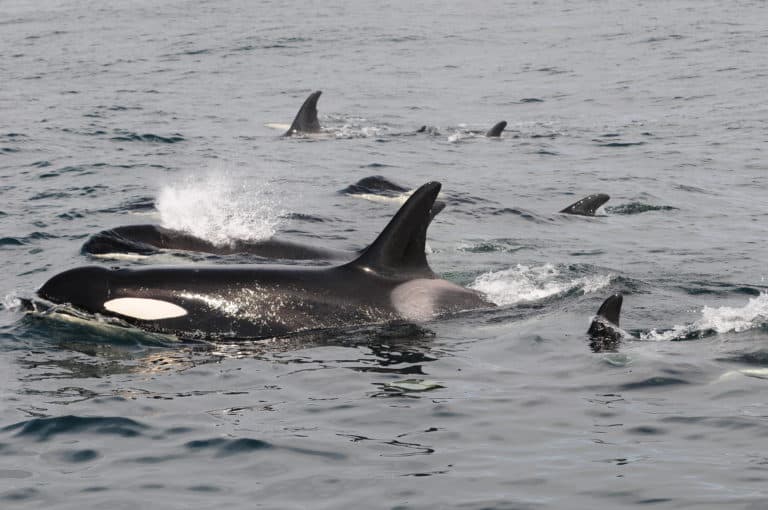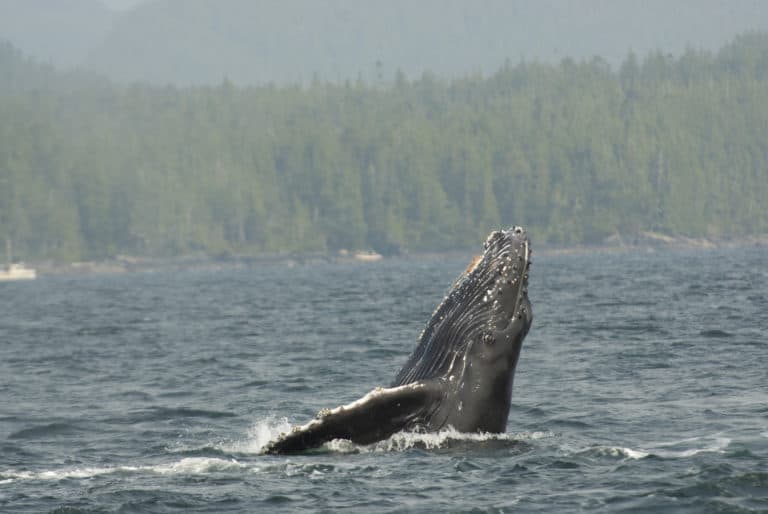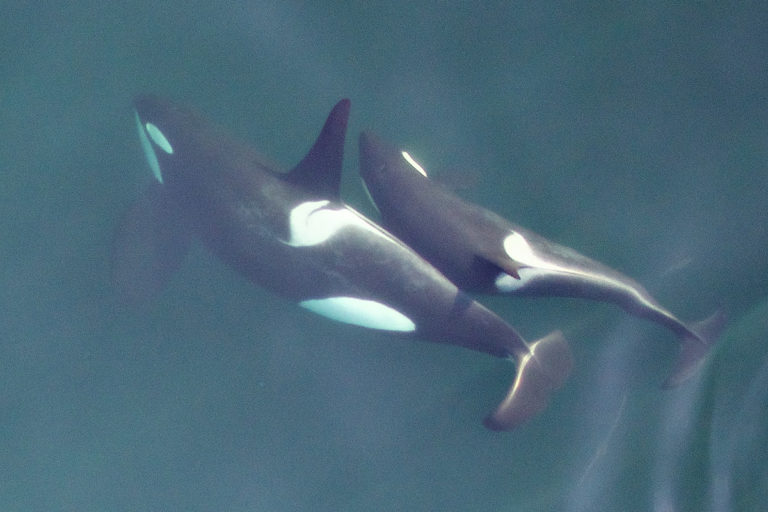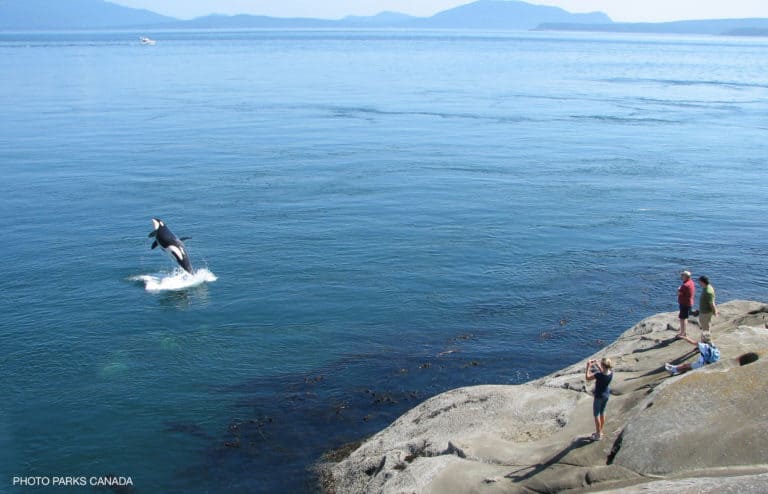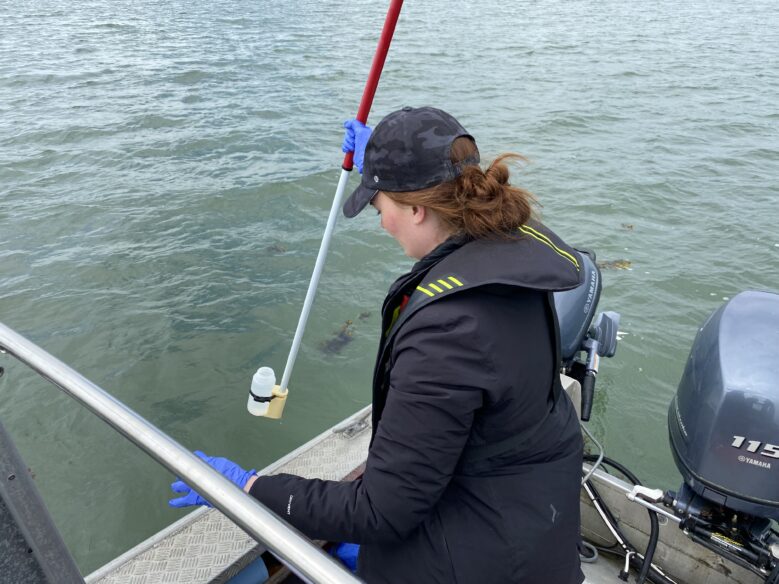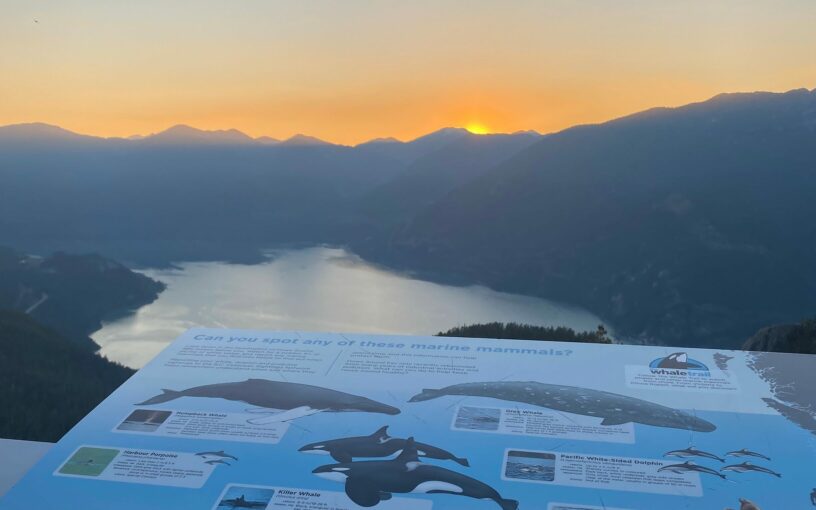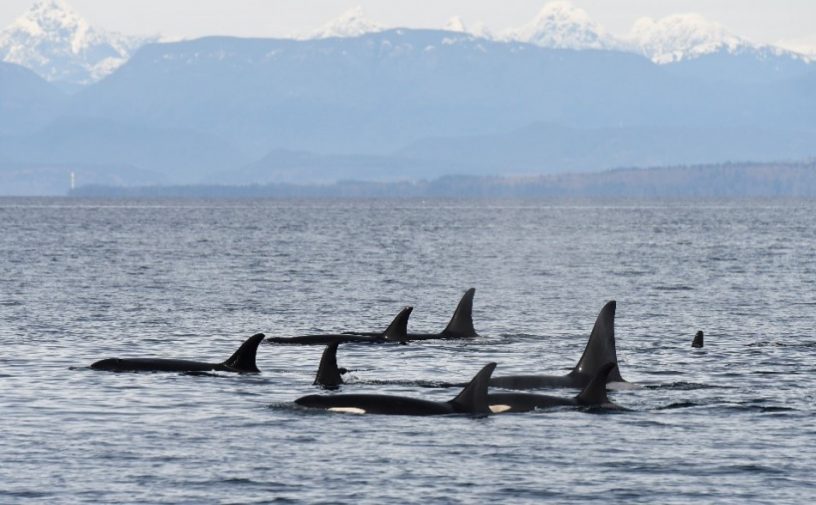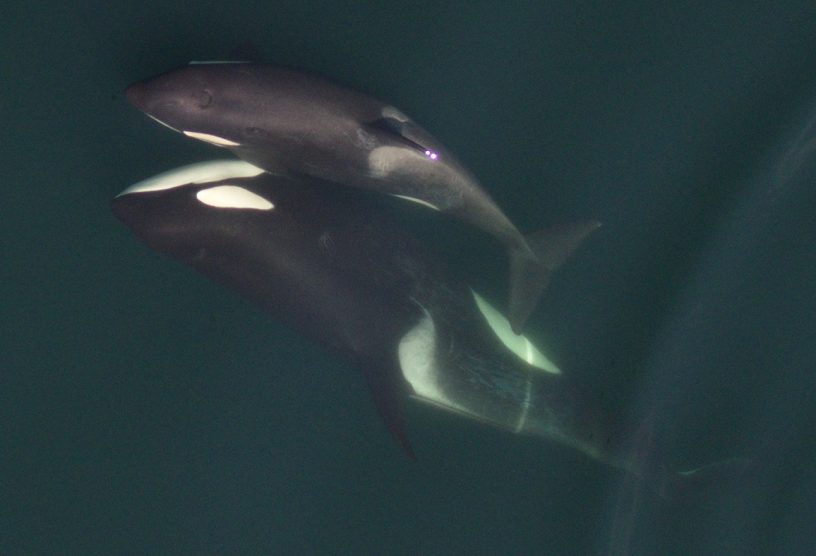Winter Field Work – Take Three
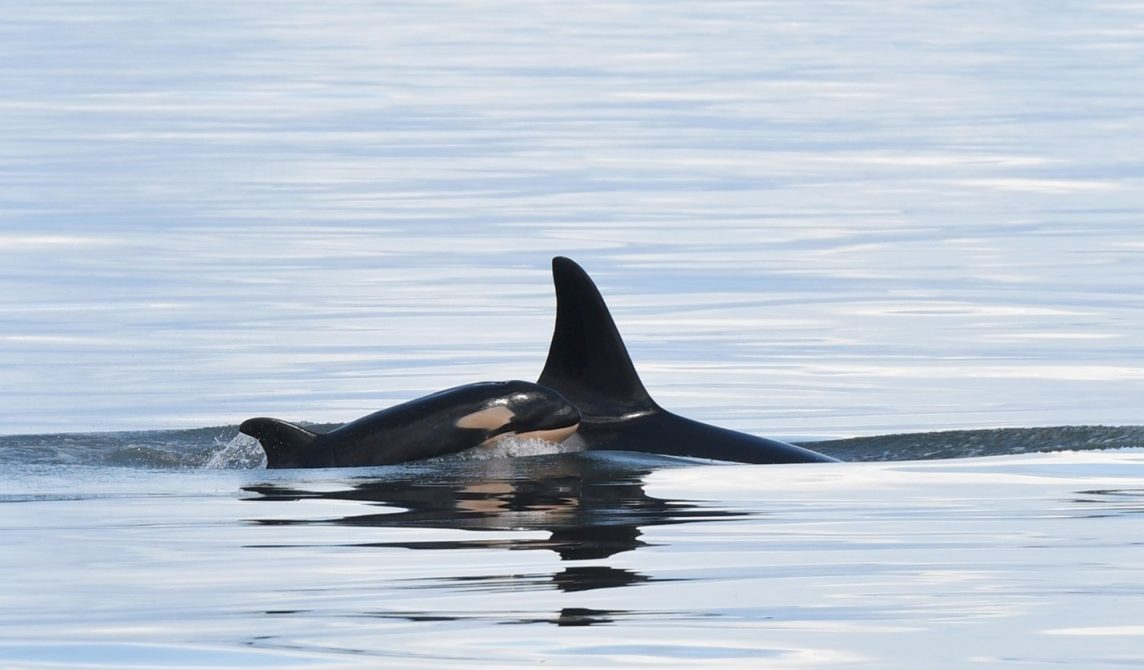
Dispatch from the Field: by Gary Sutton, Ocean Wise Research Technician
Well, that’s a wrap on Ocean Wise ’s third season of winter work, as part of the Whales Initiative’s annual whale health monitoring project in the Salish Sea, BC. It’s cold, unpredictable, and often exhausting—but also deeply rewarding (read about last year’s winter work here!) This blog is where we’ll share the stories behind the science: the long days, the near misses, the breakthroughs, and the quiet moments that keep us coming back.
Storms, Drones & Humpbacks: the Season Kicks Off
Let’s start at the beginning, shall we? Back in November 2024, we launched our winter research season with a dedicated drone effort, basing ourselves on Gabriola Island, BC, right in the heart of the humpback whale action for that time of year. And that’s where our first challenge hit.
Just after we arrived, a powerful storm rolled in—one of those notorious “bomb cyclones.” We only caught the edge of it, but it was enough. Power outages in our accommodation, fallen trees blocking the island’s roads, and a broken piling at the dock where our boat was tied up could’ve easily shut us down. But we pushed through, threading the weather needle and making the most of a narrow two-day window.
In that time, we managed seven drone flights and captured images of fifteen different humpback whales. These aerial photos aren’t just beautiful, they’re crucial. They offer a glimpse into the health and lives of the whales. For example, scarring patterns identified from the drone-collected images are being used to track entanglement and ship strike rates as part of a collaborative project with the Marine Education and Research Society, with additional data contributions from Bay Cetology, the Raincoast Conservation Foundation, and Fisheries and Oceans Canada.
All that, from just two stormy days on the edge of a “bomb cyclone”. Not a bad way to kick off the season.
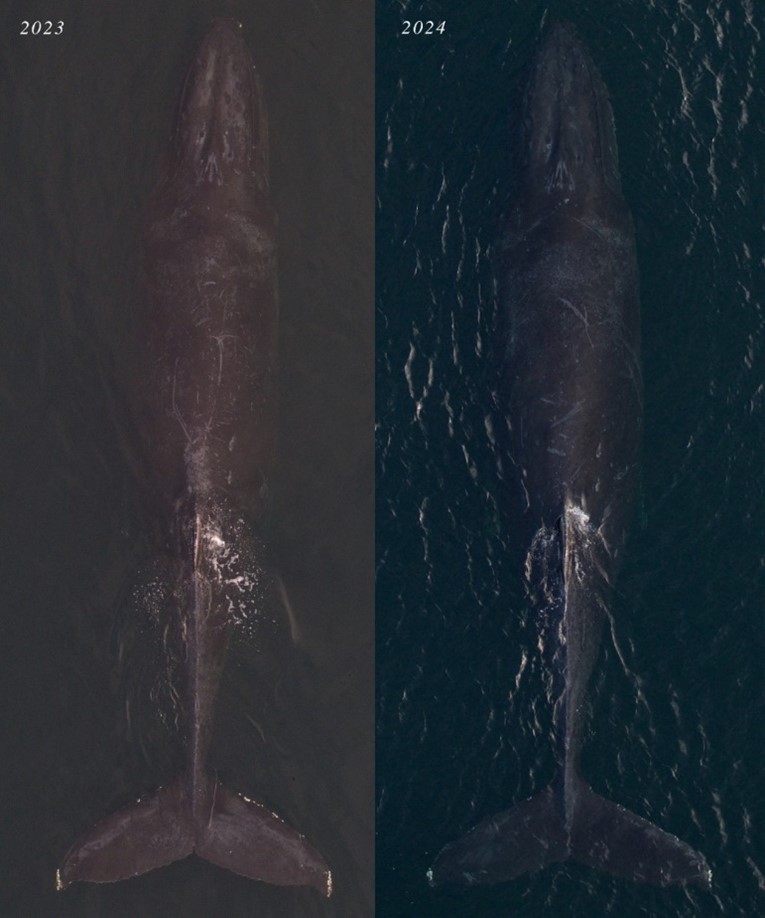
Finding the Northern Residents
As the winter pushed on and the humpbacks departed on their journey to warmer waters, our focus shifted to Resident killer whales and better understanding their diet during the winter months. This represents a significant data gap in the recovery strategy for these whales—that exists for a reason. Collecting prey samples (samples of scales or tissue from the salmon the killer whales are feeding on) can be challenging at the best of times. Then introduce winter’s shorter days, colder temperatures, fewer sighting reports, and rougher seas — now it’s a big challenge!
Our prey sampling attempts began early in 2025 as a Northern Resident killer whale pod known as the A5s made their annual winter trip to southern BC waters. They say timing is everything, and that had never felt truer than during our first attempt to catch up with them.
Our adventure began with high hopes, packed cameras, sampling nets, and vials of ethanol heading north to catch up with these whales and, with any luck, come home with some salmon scales — and one step closer to understanding the winter diet of these threatened whales. But as fate would have it, the whales had departed the very same day we arrived.
We lingered for a couple of days, scanning the horizon, and listening for a telltale spout or splash. Nothing. So, reluctantly, we turned around and headed home. The very next morning, of course, we got the news: the whales were back. Fueled by a cocktail of hope and stubborn determination, we made the drive again. And just as predictably, the whales had vanished…..again.
But on the final attempt, after miles at sea, gallons of coffee, frozen fingers, and a healthy dose of self-doubt, we finally caught up with them. And it was worth every misstep.
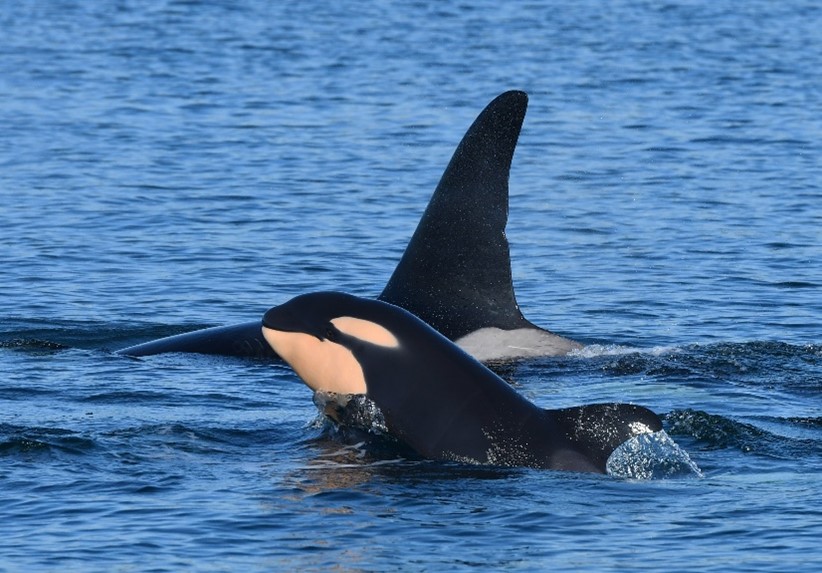
All that determination paid off! Not only were we rewarded with four prey samples but, we also got to meet the very new, and first calf of A88 “Cameleon”!
The samples didn’t come easily with the whales spending a lot of the day traveling, but, as the sun dipped towards the horizon, the hunt was on! Whales spread out and started chasing fish through a narrow channel. We moved in and saw those shimmering scales fluttering and sinking into the depths before we reached down with our sampling net and were able to collect a few.
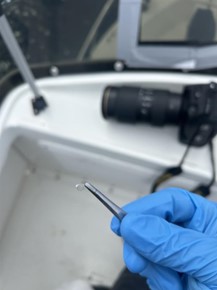
These tiny scales contain a wealth of information. The DNA extracted from these salmon scales can reveal the species of the fish, its age, and the river it came from, contributing to a long-term database of historic diet trends maintained by Fisheries and Oceans Canada.
Armed with this information, it will allow for more targeted conservation efforts to protect the fish stocks that these whales rely on during the winter months.
Not long after we gathered the samples, the A5 pod slipped away, heading back to the familiar northern waters where they’re more commonly found. With that, our focus shifted to the endangered Southern Resident killer whales and trying to replicate our success that we had with their northern counterparts.
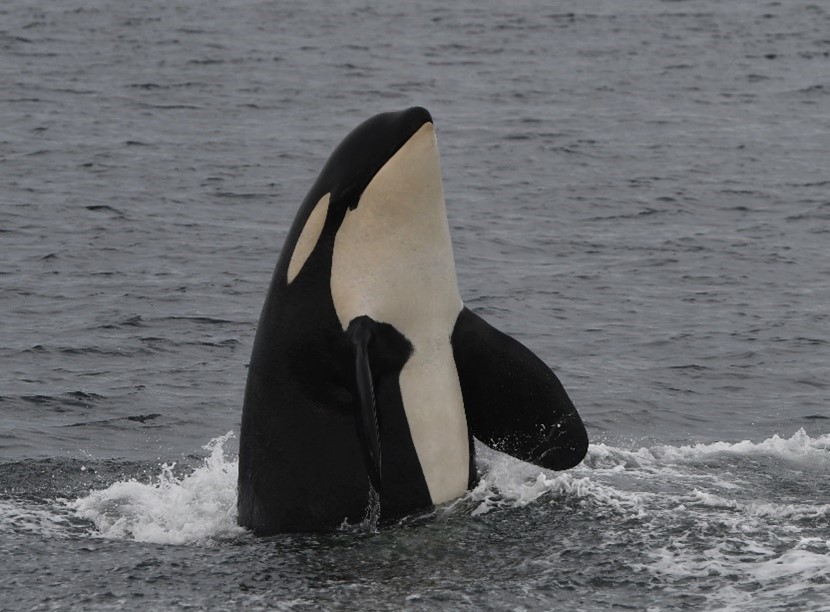
A New Calf and Hard-Earned Data
Our first few efforts proved to be more difficult with the Southern Residents as their foraging areas expanded across a larger region of the Salish Sea and challenging weather limited our ability to get out on the water. But again, persistence paid off. Much like with the Northern Residents, we were able to collect multiple prey samples and had the incredible opportunity to meet a brand-new calf, J63 — the first offspring of J40, also known as “Suttles”. This new addition brings the Southern Resident killer whale population to a total of just 74 individuals. As these whales continue to rely more heavily on this region during the winter months, every prey sample we collect is invaluable with each one bringing us a step closer to understanding, protecting, and ultimately helping to recover this endangered population.
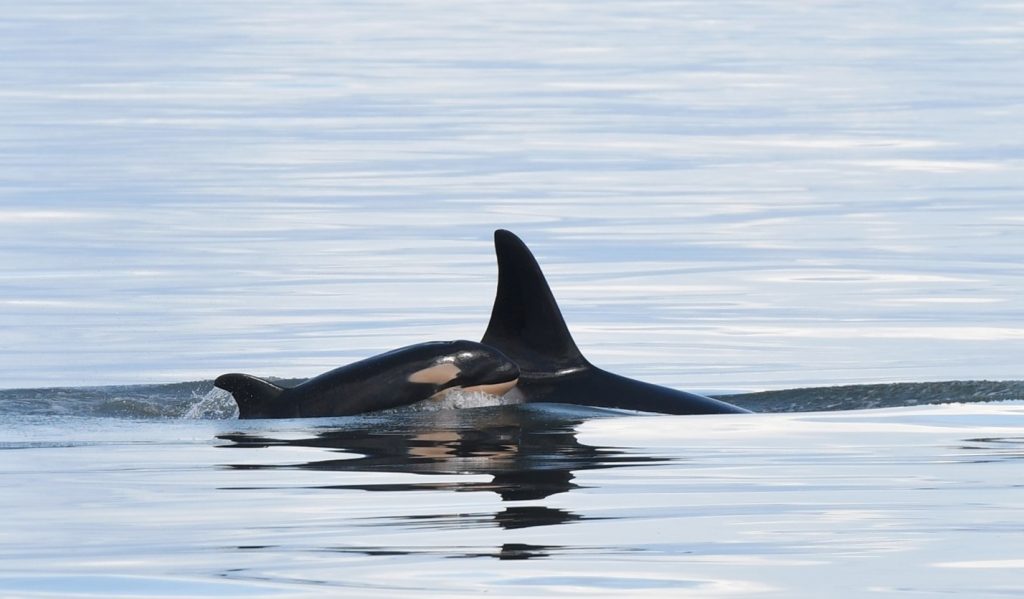
Now, as the days grow longer and the temperatures begin to rise, we pack away our gloves, jackets, and toques. The winter gear comes off, the data gets sorted, and our research vessel gets the care it deserves after months of braving the cold. With another season behind us, we already find ourselves looking ahead and preparing for next winter and hoping for another successful chapter in our efforts to better understand the snowy, secret lives of these at-risk whale species.
Funding for this work was graciously provided by Prince of Whales and North Island Kayak and donations received through the Ocean Wise Killer Whale Adoption Program.
All vessel and drone research were conducted under Fisheries and Oceans Canada permit MML-18.
Posted May 16, 2025 by Rosemary Newton
